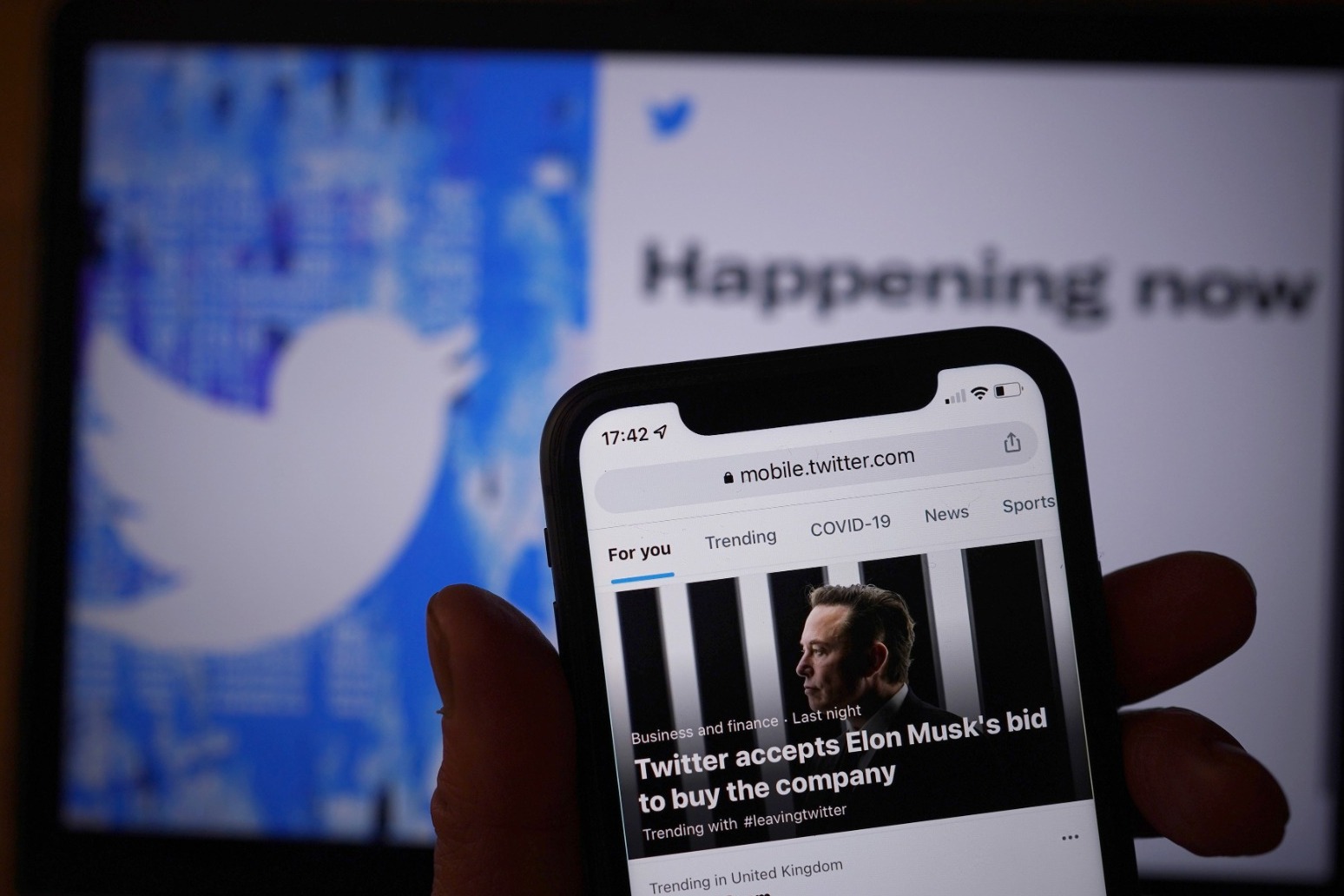
Twitter limits number of tweets people can read in a day
Unverified accounts can only read 600 posts a day
Twitter has begun limiting the number of tweets people can read, Elon Musk has announced.
Mr Musk, who took over Twitter in October after buying it for 44 billion dollars (£35.5 billion), declared on Saturday that verified accounts are being limited to reading 6,000 posts a day.
Unverified accounts can only read 600 posts a day, with new unverified accounts limited to just 300 per day, he said – though he later added: “Rate limits increasing soon to 8,000 for verified, 800 for unverified & 400 for new unverified.”
The Tesla and SpaceX CEO said Twitter had imposed the “temporary limit” to “address extreme levels of data scraping & system manipulation”.
But the move sparked a scathing response from many users, including Matt Navarra, a social media consultant and industry analyst, who told the PA news agency: “Never have I seen a social network try so hard to put people off using a platform and to completely curtail any potential future for its business.”
And Adam Leon Smith, of BCS, The Chartered Institute for IT – the UK’s professional body for IT, said it is “very odd to start rate-limiting the reading of a social network”, as limiting users’ scroll time “will affect advertising revenue”.
Mr Musk has not said when exactly the limits will increase, or how long the restrictions will be in place for.
In the UK, thousands of people complained of problems accessing the site from 12pm onwards on Saturday.
#Twitterdown and RIP Twitter began trending as frustrated users were faced with a message saying “Rate limit exceeded. Please wait a few moments then try again”.
On Friday, people trying to access Twitter were told they would need to log in to an account to view tweets, in what Mr Musk called a “temporary emergency measure”.
It comes after another outage in February, when many users were not able to tweet, follow accounts or access their direct messages as the platform was plagued by widespread technical problems.
Mr Navarra, who previously worked as a digital communications adviser for the UK Government, said the move was “yet another crazy decision by Elon Musk in showing how to burn 44 billion dollars in a year”.
“I think that it’s going to punish the users it needs the most which is its power users, it’s heavy users, which is clearly a perverse way of operating, I would say,” he said.
He said “people are ready to get off this sinking ship as soon as possible because every week comes another bonkers business decision” at Twitter.
He added: “I am surprised and shocked at this latest policy decision or platform change that he’s made, I struggle to see how this is going to do anything to help recover this business into being a profitable and highly-used platform.”
He said it “quite shocking that he’s also rate-limiting people that have already paid to be on the platform”, adding that the even lower limit for unverified users “is going to be swallowed up in no time and it will soon become quite frustrating and annoying for its most addicted and heavy users to find that they are rate limited”.
After taking over Twitter, Mr Musk laid off some 80% of its 8,000 global staff – and admitted it resulted in the platform losing a large amount of its functionality.
He also oversaw the scrapping of legacy “blue ticks”, which verified a user’s identity and were replaced by a paid-for subscription called Twitter Blue.
High-profile figures and celebrities said the move leaves the platform open to imposters and disinformation.
Users who pay £9.60 a month, or £115.20 annually, receive the blue tick and can make longer tweets up to 10,000 characters.
Other select features available only to subscribers include non-fungible token (NFT) profile pictures, making changes to published tweets and seeing around 50% fewer ads.
On the latest changes to Twitter, Mr Smith added: “While data scraping may be part of the reason, there are very to be likely underlying technical problems.
“The alleged data scraping could well be caused by Twitter now charging exorbitant fees for API access, which may have led to a secondary market for tweet data.”
In December, just weeks after the takeover, Mr Musk tweeted: “I will resign as CEO as soon as I find someone foolish enough to take the job.”
The pledge came after millions of Twitter users asked him to step down in a poll Mr Musk created and promised to abide by.
In May, Mr Musk confirmed that advertising executive Linda Yaccarino was joining from NBCUniversal to become Twitter’s chief executive.
Published: by Radio NewsHub